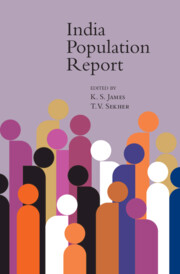2 - Demographic Dividend in India
What Do We Know?
Published online by Cambridge University Press: 15 August 2023
Summary
Introduction
The demographic dividend has been the subject matter of immense interest across countries, among both scholars and policymakers in recent decades. It is also known as the demographic window of opportunities, implying that considerable opportunities exist for nations due to the favourable changes in the age structure brought about by fertility decline. The demographic dividend is the result of an increase in the share of the working-age population and a decline in the combined share of the old- and young-age dependant population. The swelling of the working-age population may cause a rise in the supply of labour force in the market, a decline in the child population may cause a shift in demand for household resources from investment in children to greater capital investment, and fertility decline may allow a rise in female workforce participation (Bloom et al., 2009).
The debate on the change in the population structure and economic growth has been a well-researched and discussed issue that was initiated by Thomas Robert Malthus. Later, Coale and Hoover (1958), in a seminal work, estimated the economic benefits of fertility decline, taking India also as an example. Similarly, Kuznets (1967) found that a population increase negatively affects the economic development of a country. On the contrary, Kelley (1988) observed that there is no universal association between population increase and growth in per capita income and savings rates. On the other hand, Lutz et al. (2019), using the panel data of 165 countries, documented that the human capital as measured by educational attainment causes a change in the age structure and economic development. Despite these mixed findings on the relationship between population and development, a large number of studies established that the change in the age structure itself has inevitable economic benefits (Lee and Mason, 2006; Bloom et al., 2010; James, 2008; Joe, Kumar, and Rajpal, 2018; Mason, Lee, and Lee, 2010).
Even while the demographic dividend potential is well recognized in India, there are many pessimistic views expressed on the ability of the country to take advantage of demographic changes due to several institutional constraints. The primary argument against expecting a substantial demographic dividend in India rests on the poor skill levels in the country and the lack of job opportunities. Of these, the lack of significant increase in female labour-force participation has attracted wide attention in recent times (Desai, 2010; Klasen and Pieters, 2012).
- Type
- Chapter
- Information
- India Population Report , pp. 21 - 45Publisher: Cambridge University PressPrint publication year: 2024



